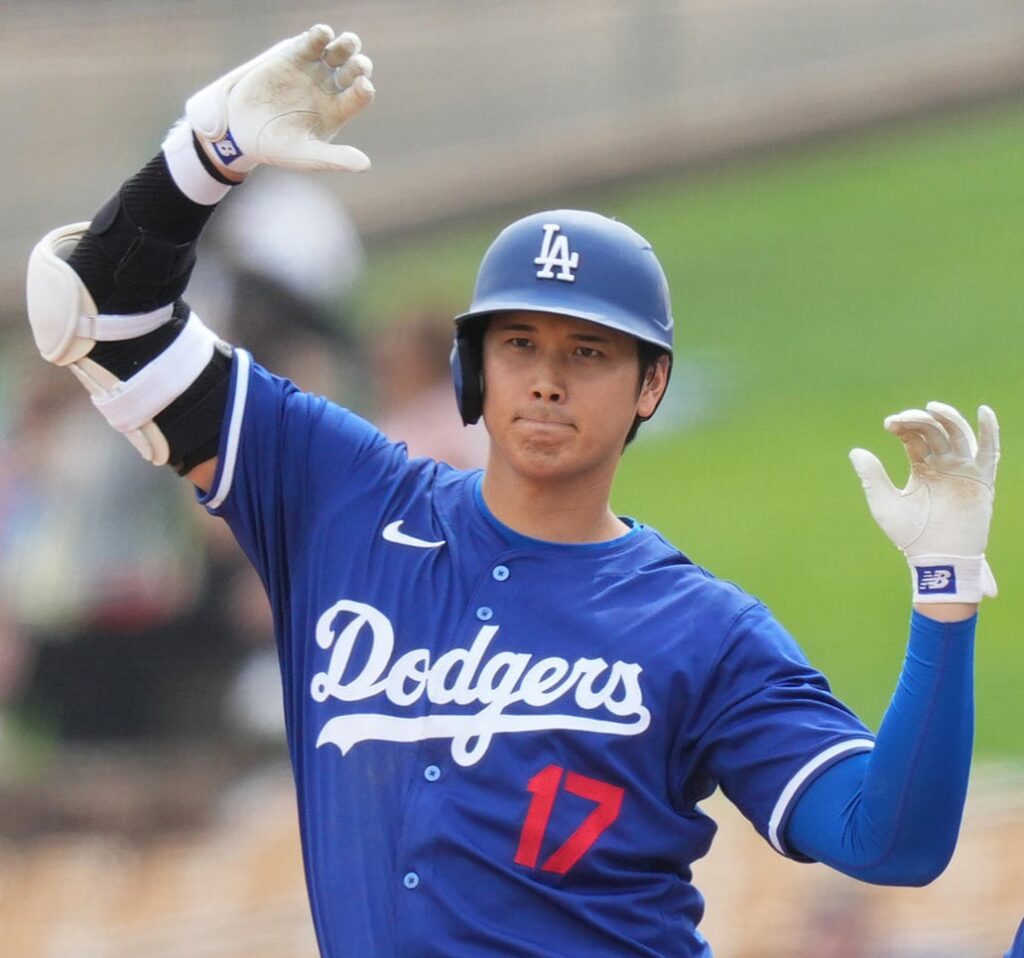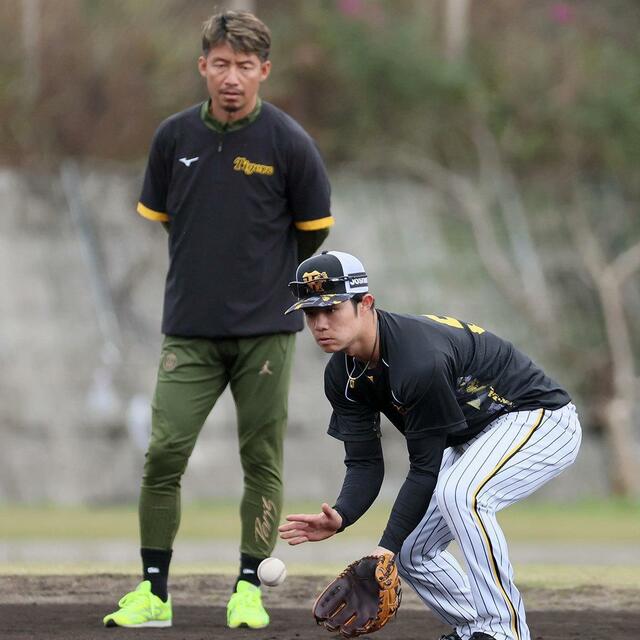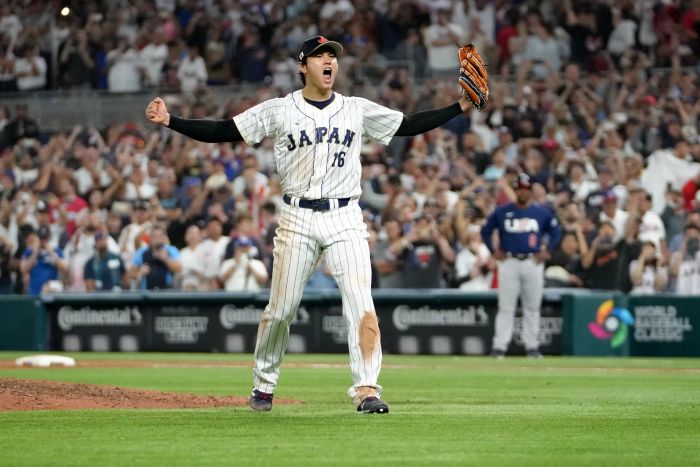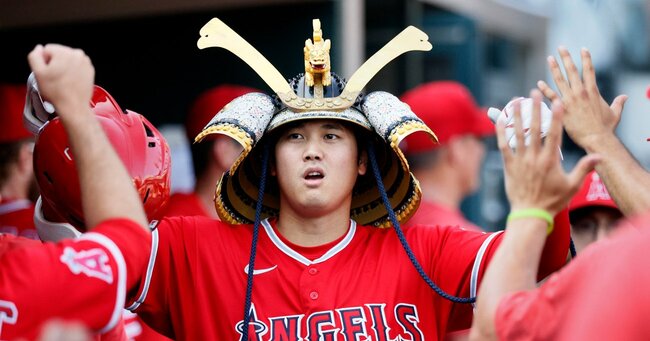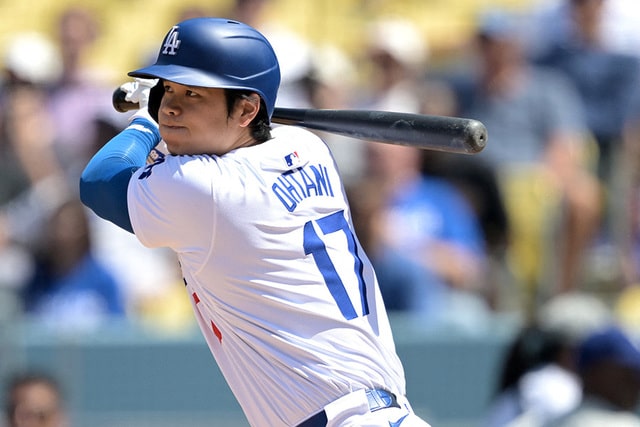
In the world of baseball, the term DH (designated hitter) is often heard.
DH stands for “Designated Hitter,” known as “designated hitter” in Japanese.
This system is a rule that allows a pitcher to not bat and have a dedicated batter bat instead.
The DH system has become a very important tactic, especially for teams that want to strengthen their batting power or reduce the burden on their pitchers.
In this article, we will take a detailed look at the basics of how to read the DH system, its meaning, role, advantages, differences between leagues, famous DH players, criticisms, and future prospects.
Follow the headings below to gain a deeper understanding of the DH system.
目次
- 1 Overview and basic information about the DH system
- 2 The role and benefits of the DH
- 3 Introduction of the DH system and differences between leagues
- 4 DH Tactics and Strategies
- 5 Famous DH players and their achievements
- 6 Criticism and opposition to the DH system
- 7 The future and outlook for the DH system
Overview and basic information about the DH system
The designated hitter (DH) system is a rule in baseball that allows a designated hitter to bat in place of the pitcher.
This system is a particularly effective tactic for teams that want to strengthen their batting power or reduce the burden on their pitchers.
The DH system is primarily used in Major League Baseball (MLB) in the United States and professional baseball (NPB) in Japan, and is implemented differently in each league.
How to read and what does DH mean?
DH is an abbreviation for “Designated Hitter” and is pronounced “designated hitter” in Japanese.
The system was first introduced in Major League Baseball’s American League in 1973.
The DH system plays a major role in changing the strategy and flow of a game by not having the pitcher bat and instead having a player who specializes in hitting take the batting position.
History of the DH system and background to its introduction
The DH system was introduced to address declining attendance and to improve the appeal of the games.
In the early 1970s, the poor batting ability of pitchers was a problem in Major League Baseball and was seen as a factor that made the games less exciting.
In response to this, the American League introduced the DH system in 1973, aiming to increase the offensive power of the entire game by allowing pinch hitters to cover for pitchers at bats.
When it was first introduced, there was mixed reaction, but its effectiveness gradually became recognized and it became established in the American League.
The DH system then spread to other leagues and countries, and was also adopted in Japanese professional baseball.
DH system in Japanese professional baseball
In Japanese professional baseball, the DH system was first introduced in the Pacific League in 1980.
The DH system is not used in the Central League, so there are differences in how it is implemented between leagues.
This is because the Pacific League took inspiration from the American League and aimed to play a more aggressive style of baseball.
With the introduction of the DH system, pitchers do not bat in Pacific League games, which not only reduces the burden on them, but also means that players who specialize in batting are used, making the games more exciting for spectators.
In addition, the DH system creates an environment where veteran players and players returning from injury can concentrate on hitting, which also contributes to extending players’ careers.
Pros and cons of the DH system
The benefits of the DH system include improved hitting power and reduced burden on pitchers.
By using players who specialize in hitting, the scoring potential of the game will increase, and spectators can expect exciting matches.
It also allows pitchers to concentrate on pitching, reducing the risk of injury and improving performance.
On the other hand, the disadvantages include a lack of strategic diversity and the loss of traditional elements of baseball.
With pitchers not at bat, tactics such as pinch-hitting and bunting are limited, which can make game strategies monotonous.
There is also criticism that the DH system deviates from the true essence of baseball, and there is strong opposition from traditional baseball fans.
As such, it is important to understand the DH system as an important tactic in baseball, its role, advantages, and historical background.
By making good use of the DH system, it is possible to bring out the excitement of the game and maximize the performance of the players.

The role and benefits of the DH
The designated hitter system is a rule in baseball that allows a designated hitter to bat in place of the pitcher.
This system has been a key element in diversifying the team’s tactics and maximizing player performance.
Here we will explain in detail the specific role and advantages of the DH system.
Strike Enhancement and Tactical Advantage
The most obvious benefit of the DH is improved hitting. Pitchers are not typically good at hitting, so having a dedicated hitter take over for the pitcher’s at bat can greatly improve a team’s overall scoring ability.
It is hoped that this will make the matches more exciting and provide more engaging experiences for spectators.
Additionally, utilizing the DH system expands a team’s tactical options.
For example, using a veteran player with strong hitting ability as the DH allows you to make the most of their experience and skill.
It will also be possible to send in a strong hitting player as a pinch hitter in certain situations, allowing you to turn the tide of the game in your favor.
Reducing the burden on pitchers and preventing injuries
The DH system is also an effective way to reduce the burden on pitchers.
Pitchers can concentrate on pitching, avoiding the risk of injury when at bat.
In particular, it offers great benefits to pitchers’ health management as it reduces the strain on muscles and joints caused by running and batting.
It also improves pitching performance by preventing the stress and distraction that occurs when a pitcher is at bat.
This will enable them to maintain consistent pitching throughout the season, leading to improved performance for the entire team.
Impact on team composition
The DH system also has a major impact on team composition.
By having a hitting-specialized player as the DH, you can increase your offensive power while maintaining the defensive strength of your other positions.
This allows for a more balanced team and allows for more flexible tactics.
The introduction of the DH system will also bring about changes in how players on the bench are used.
For example, by using a player returning from injury or a veteran player with limited defensive range as a DH, you can take advantage of their hitting ability while minimizing defensive risk.
This will extend the lifespan of players and maximize the team’s fighting power.
Future outlook for the DH system
The DH system has many benefits and is likely to be adopted by many leagues in the future.
In particular, the DH system has begun to be introduced in the National League (NL) of Major League Baseball, and is becoming more widespread throughout baseball.
This will enable more fans to enjoy the games, and is expected to further increase the appeal of baseball.
By making good use of the DH system, teams can diversify their tactics and the way they use players, making the games more exciting.
For these reasons, the DH has become a very important element in modern baseball, and understanding its role and advantages is important for both baseball fans and team managers.
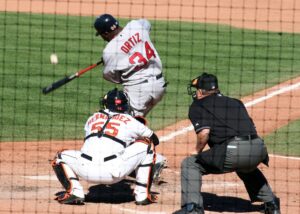
Introduction of the DH system and differences between leagues
The DH (designated hitter) system is one of the major rule changes in baseball, and there are differences in how each league implements it and how it is implemented.
Here we will take a closer look at the DH system in Major League Baseball (MLB), Nippon Professional Baseball (NPB), and other leagues around the world.
Major League Baseball (MLB) DH system
In Major League Baseball, the DH system was introduced in the American League (AL) in 1973.
The aim behind this introduction was to increase the offensive power of the match and attract more spectators.
Since the DH system was adopted in the American League, using players who can concentrate on batting has made games more exciting and has earned the support of fans.
Meanwhile, the National League (NL) had not adopted the DH system for a long time, but following the 2020 pandemic season, the DH system was provisionally introduced in all leagues.
This change has brought the DH into NL games, opening up new strategies to date.
In 2022, the DH system will be officially adopted in both leagues, making it a unified rule across MLB.
Differences between the Pacific League and the Central League of Nippon Professional Baseball (NPB)
In Nippon Professional Baseball (NPB), the DH system was introduced in the Pacific League (PA) in 1980.
The Pacific League adopted this system, modeled on MLB’s American League, in order to strengthen the offensive power of the games and provide more attractive matches to spectators.
In the Pacific League, the use of players who specialize in batting makes the games more exciting and is gaining support from fans.
On the other hand, the Central League does not use the DH system.
The Central League places emphasis on a traditional style of baseball, and by having pitchers bat, they aim to add variety to the strategies and tactics of the game.
For this reason, the pitcher’s batting and the use of pinch hitters are important factors in Central League games, allowing the enjoyment of different game developments.
DH in other leagues around the world
The DH is used in various forms in other leagues around the world.
The DH system has also been introduced in the Korea Professional Baseball Organization (KBO) and the Chinese Professional Baseball League (CPBL), where it is used as a tactic to increase the offensive power of games.
These leagues use the DH system to maximize player performance and provide more attractive games for spectators.
In addition, the DH system has also been introduced in baseball leagues in Europe and Latin America, and the way it is implemented varies depending on the region.
For example, in the Cuban and Mexican leagues, the DH system is commonly used and offensive tactics are emphasized.
On the other hand, some amateur leagues and some professional leagues have not adopted the DH system in order to maintain the traditional style of baseball.
As such, the introduction and implementation of the DH system varies by league and region.
In Major League Baseball, the DH system is implemented under unified rules, while in Japanese professional baseball, different tactics are deployed in each league.
In baseball leagues around the world, the DH system plays an important role in increasing the appeal of the games, and it is expected that the way it is used will continue to evolve in the future.
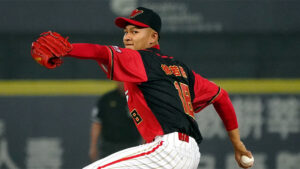
DH Tactics and Strategies
The DH system (designated hitter system) is an important factor in baseball that significantly changes team tactics and strategies.
Using the DH effectively can have a huge impact on the flow and outcome of a game.
Here we will take a closer look at typical tactics using the DH, how to select and qualify the DH player, and how the DH system affects the flow of the game.
A typical tactic using DH
The introduction of the DH system allows teams to employ a variety of tactics.
Here are some typical tactics for using the DH:
1. Use the DH to improve your hitting : Using a batting-focused player as the DH will improve the offensive power of your entire lineup. This will increase your scoring potential and give you an advantage in the game.
2. Utilizing veteran players : Even if a veteran player’s defensive skills have declined, if he or she still has good hitting ability, you can make the most of their experience and skills by using them as a DH. This allows you to develop young players while maintaining the balance of the team as a whole.
3. Left-Right Batting Balance Adjustment : By adjusting the DH according to the left-right side of the opposing pitcher, we can balance the batting and counter the tactics of the opposing team. This makes it easier to attack the opposing pitcher.
How to select DH players and their suitability
There are a few important points to consider when selecting a DH player.
By choosing the right DH player, you can maximize your team’s potential.
1. High batting ability : The most important factor required for a DH is batting ability. Players with excellent batting statistics such as batting average, home runs, and on-base percentage are suitable for the DH position. Players with long-range hitting ability in particular will greatly improve the team’s scoring ability.
2. Adaptability : The ideal player is one who can calmly step up to the plate depending on the situation in the game. Players who can handle pressure and produce results in important situations are well suited to being a DH.
3. Players returning from injury : Players who have defensive issues but no problems hitting are also suitable for the DH position. This allows a smooth return from injury.
How the DH affects game flow
The DH system will have a major impact on the flow of the game.
The specific impacts are explained below.
1. Increased tempo of the game : The DH system increases the tempo of the game by eliminating the need for pitchers to bat. This makes the game easier for spectators to follow and increases the overall sense of speed in the game.
2. Diversification of tactics : By utilizing the DH system, teams can deploy more diverse tactics. They can use hitting-focused tactics or defense-focused tactics depending on the situation. This allows them to respond flexibly to opponents.
3. Expanded player selection : The DH system allows teams to expand the range of player selection. Even players who are not good at defense can be used as DHs if they have the hitting ability, so players have more opportunities to play an active role. Also, even players who are difficult to use as pinch hitters can have more opportunities to contribute to the team by playing as DHs.
The DH system is an important factor that has a huge impact on baseball tactics and strategies.
By selecting the right DH player and using him effectively, you can maximize your team’s strengths and gain an advantage in the game.
By understanding and utilizing the DH system, you can enjoy a more engaging baseball game.
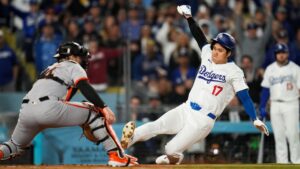
Famous DH players and their achievements
The designated hitter system has produced many excellent hitters and has had a major impact on the game of baseball.
Here we will take a closer look at past DH players in Major League Baseball (MLB) and Nippon Professional Baseball (NPB), as well as the characteristics of successful DH players.
Major League Baseball DH players
In Major League Baseball, many excellent DH players have emerged since the DH system was introduced in the American League in 1973.
Here are some of the more notable players:
David Ortiz : Commonly known as “Big Papi,” Ortiz is a Boston Red Sox legend. He was a powerful bat who hit numerous home runs and helped the team win the World Series in 2004, 2007 and 2013. Ortiz is considered one of the most successful DHs in MLB history.
Edgar Martinez : Seattle Mariners’ Edgar Martinez is known as a hitting genius. He had a career batting average of .312 and is famous for his dramatic hit in the 1995 American League Championship Series (ALCS). He was inducted into the Hall of Fame in 2019 and has the “Edgar Martinez Award” named after him.
Frank Thomas : Frank Thomas, known as “Big Hurt,” was a Chicago White Sox icon. He won back-to-back MVP awards in 1993 and 1994 and hit 521 home runs in his career. Thomas is another icon of DH success.
Former DH players in Japanese professional baseball
Since the DH system was introduced in Nippon Professional Baseball (NPB), many excellent DH players have been active.
Here are some of the more notable players:
Shigeo Nagashima : Shigeo Nagashima, a Yomiuri Giants legend who also played as a DH after his retirement, helped popularize the DH system in NPB.
Shohei Otani : Known as a two-way player, Shohei Otani also played as a DH for the Hokkaido Nippon-Ham Fighters in the NPB. He excelled as both a batter and a pitcher, and has continued to demonstrate his talents even after moving to the major leagues.
Nobuhiko Matsunaka : Fukuoka SoftBank Hawks’ Nobuhiko Matsunaka won the Triple Crown in 2004 and led the team with his batting prowess. He is one of the few Triple Crown winners in NPB history and a successful DH.
Successful examples and characteristics of DH players
Successful DH players share several common characteristics.
The main features are listed below:
Strong hitting ability : Because the DH player has a specialized hitting role, it is important that he has good hitting statistics such as batting average, home runs, on-base percentage, etc. Successful DH players have the hitting ability to improve their scoring ability.
Situational Adaptability : Players who can calmly adapt to game situations tend to be successful as DHs. They need to be mentally strong and able to perform well under pressure.
Long careers : Many successful DH players have long careers and consistent hitting performance over that time, thanks to the effort they put in to maintain their fitness and technique.
In this way, the DH system has produced many excellent hitters and plays an important role in the game of baseball.
DH players who have excelled in Major League Baseball and Japanese professional baseball continue to fascinate many fans with their outstanding batting ability and ability to adapt to any situation.
Understanding the DH system and learning about their achievements will help you enjoy baseball even more.

Criticism and opposition to the DH system
The designated hitter system is an important rule in baseball games that strengthens the offense and provides an appealing game for spectators, but it also receives a fair amount of criticism and opposition.
Here we take a closer look at the concerns over the purity of baseball, the lack of strategic diversity, and the movement and debate over abolishing the DH.
Concerns over baseball purity
One of the biggest criticisms of the DH system is the concern that it undermines the purity of baseball.
In traditional baseball, all players are expected to participate in both offense and defense.
This will test the players’ diverse skills and expand their tactical options.
Some argue that by introducing the DH system, pitchers will no longer need to bat, which will take away some of the offensive tactics.
In particular, there are opinions that the number of bunting and pinch-hitting tactics will decrease, resulting in less tension and strategic depth in the games.
For this reason, the DH system has been met with strong opposition from traditionalists who believe it deviates from the true essence of baseball.
Lack of strategic diversity
The DH system has also been criticized for lacking tactical diversity.
It has been pointed out that the strategic options that arise when a pitcher is at bat are reduced, making the game more monotonous.
For example, when a pitcher comes to bat, the manager is forced to choose whether to replace the pitcher with a pinch hitter or allow the pitcher to bat.
In such situations, strategic decisions are required that take into account the pitcher’s physical strength and the development of the next inning.
The DH system removes these strategic options, and while it does increase the consistency of the batting line-up, it does have the disadvantage of narrowing the range of tactics available.
In particular, there will be less tactical maneuvering in key moments towards the end of a match, which could make the game less exciting for spectators.
Movement and debate over abolishing the DH system
While criticism of the DH system remains strong, there are also movements and discussions calling for its abolition.
In particular, the National League (NL) did not adopt the DH system for many years, but recent efforts have seen the DH system be introduced in all leagues.
However, opposition to the move remains strong, with fans and players who value traditional baseball calling for its abolition.
In the debate over abolishing the DH system, many opinions emphasize the importance of demonstrating comprehensive skills, which is the essential appeal of baseball.
The argument is that players’ abilities should be evaluated comprehensively by participating in both offense and defense, and that the DH system distorts that evaluation standard.
There is also debate over how the introduction of the DH system will affect players’ careers.
The DH system is advantageous for players who specialize in hitting, but it may reduce the opportunities for players with overall ability to demonstrate their skills.
For this reason, calls to abolish the DH system continue as an important argument for evaluating the diverse talents of players.
As such, there is a wide range of criticism and opposition to the DH system.
In order to protect the purity of baseball, maintain tactical diversity, and evaluate the overall strength of players, the debate over whether the DH system should exist will likely continue.

The future and outlook for the DH system
The designated hitter continues to play an important role in the game of baseball, but discussions about its evolution and possible changes, new rule proposals, and international developments and impacts will continue.
Here we take a closer look at the future of the DH system.
The evolution of the DH system and potential changes
The DH system has evolved since it was first implemented in Major League Baseball’s American League in 1973.
In recent years, the DH system has been introduced in the National League as well, making it a unified rule across MLB.
The move is meant to increase the attacking edge of the game and ease the strain on players.
The DH system is likely to evolve further in the future.
For example, applying the DH system to defensive players other than pitchers may create an environment where more players can concentrate on hitting.
Additionally, a flexible implementation of the DH system may allow for different strategies to be adopted for each game.
New rule proposals and their impact
New rule proposals regarding the DH system are a constant topic of discussion in baseball.
For example, there is a proposal to standardize the DH system across all leagues and categories as a “Universal DH.”
If this proposal goes ahead, consistent rules would be applied across all matches, reducing confusion for players and fans.
Rules are also being considered to allow for flexible operation of the DH system.
For example, being able to switch DHs multiple times during a match will give you more tactical options.
This will make the flow of the game even more dynamic and provide more exciting action for spectators.
International development and impact of the DH system
The DH system is used not only in the United States and Japan, but in baseball leagues around the world.
The DH system has also been introduced in the Korea Professional Baseball Organization (KBO) and the Chinese Taipei Professional Baseball League (CPBL), and is used as an important tactic in each country’s league to increase the offensive power of games.
In the future, the DH system may expand further internationally.
For example, if the DH system becomes more widespread in leagues in Europe and Latin America, it is expected that the international competitive level of baseball will improve.
In addition, standardizing the DH system in international tournaments will reduce confusion caused by differences in rules among participating countries and create a fair competitive environment.
As the system develops internationally, attention is being paid to how the introduction of the DH system will affect baseball culture in each country.
The widespread adoption of the DH system is expected to make baseball games more exciting, increase attendance, and attract a new fan base.
On the other hand, there is also likely to be backlash from fans who place importance on traditional baseball culture, so each country’s league will need to strike a balance.
As such, there are many possibilities for the future and prospects of the DH system.
The evolution of the DH system, new rule proposals, and international expansion are expected to make baseball games even more appealing and create a better environment for players and fans.
By watching the DH system evolve and taking full advantage of its benefits, baseball’s future will be even brighter.
